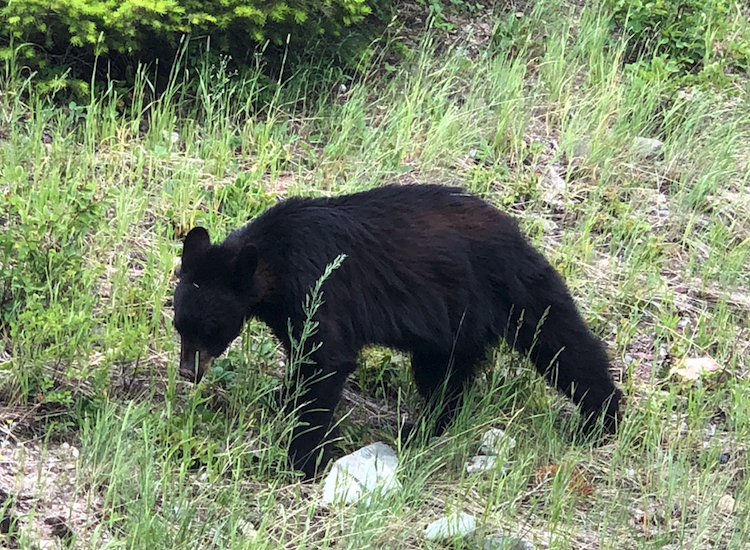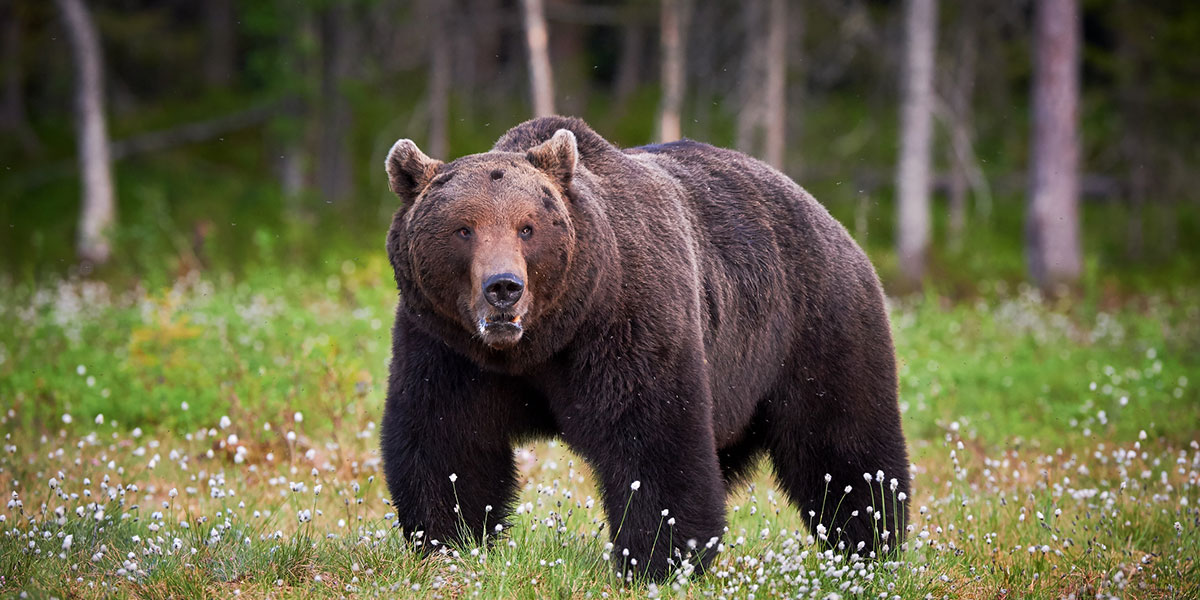When you visit Yellowstone and Glacier National Parks, as my family and I did a couple weeks ago, you see something spectacular everywhere you look, whether it's towering peaks wreathed in cloud or carpets of wildflowers. One thing you probably won't see is a grizzly bear, even though both parks and the surrounding wilderness are prime bear habitat. Like us, you might find yourself in what's known as a "bear jam." As you can see, though, the animal backing up traffic was the grizzly's smaller cousin, a black bear:

Grizzly bears do their best to avoid the most dangerous animal of all: humans. At the same time, park rangers do their best to keep people away from grizzlies, even if it means temporarily closing a popular trail. Even so, when you hike in the park, it's at the back (or for my wife, the front) of your mind: Will there be a bear around that corner? Part of you would be excited to see one (from a distance), and part of you (the sensible part) hopes you're making enough noise on the trail to avoid surprises. Even so, and despite their size, without their grizzlies, Yellowstone and Glacier National Parks would be diminished.
That came close to happening about fifty years ago, when the total grizzly population in the lower 48 was down to about 800 bears. In the Greater Yellowstone Area, fewer than 150 were left. Technically, what saved grizzlies was passage of the Endangered Species Act. In reality, though, it was a shift in attitude -- from "us or them" to "conservation and coexistence" -- that made it possible. Federal protection led to enlightened policies (like closing park garbage dumps that attracted bears and educating local landowners on how to avoid human-bear conflicts) that made coexistence feasible.
Even so, it's been a long, slow road toward recovery. Grizzlies reproduce very slowly (only one North American mammal takes longer, and if you don't already know, you'll never guess which one). Although grizzly populations in Yellowstone and Glacier are certainly in better shape now than before they were protected, their future remains precarious. That's why it's so disastrous that U.S. Fish and Wildlife Services took the Greater Yellowstone grizzly off of the endangered species list, which eliminated many protections and put the fate of the bears in the hands of the Wyoming, Idaho, and Montana state governments.
Grizzlies today occupy only about two to four percent of their historic range in the Lower 48
The result? Despite public protest, and against the advice of scientists, the Wyoming Game and Fish Commission has decided to let trophy hunters kill nearly two dozen bears this year -- including females of breeding age -- and Idaho has approved killing one bear in the first year, and potentially more after that. Regardless of what you think of trophy hunting (for the record, most Americans deplore it), this is indefensible. Remember, it took more than 40 years to increase the Greater Yellowstone grizzly population from fewer than 150 to about 700. In the past three years, more than 150 bears in that region have died, mostly from human-related causes. And nobody knows how grizzlies will cope with the increasing and disturbing effects of climate change on their food supply.
Grizzlies today occupy only about two to four percent of their historic range in the Lower 48. With the loss of protection for the Greater Yellowstone population, even that tiny foothold is again in jeopardy. Will the grizzlies of the Northern Rockies, like those in Glacier National Park, be the next to face slaughter if they step over the park boundary? Don't look to Interior Secretary Ryan Zinke to protect the bears in his home state of Montana or anywhere else; the centerpiece of his office makeover wasn’t those $139,000 doors but a stuffed and mounted grizzly.
The Sierra Club, other conservation groups, and the Northern Cheyenne nation (for whom the grizzly bear is sacred) have filed lawsuits over the delisting, and we expect a decision on August 30, right before the trophy hunts are slated to begin. We'll do all we can to ensure that grizzly bears not only survive in places like Greater Yellowstone and the Northern Rockies but also thrive wherever suitable habitat remains. On September 1, though, it’s possible that the first sanctioned trophy hunt for these magnificent animals in 40 years will begin. If so, that will be a sad day for America, and a tragic one for the grizzly bear.
